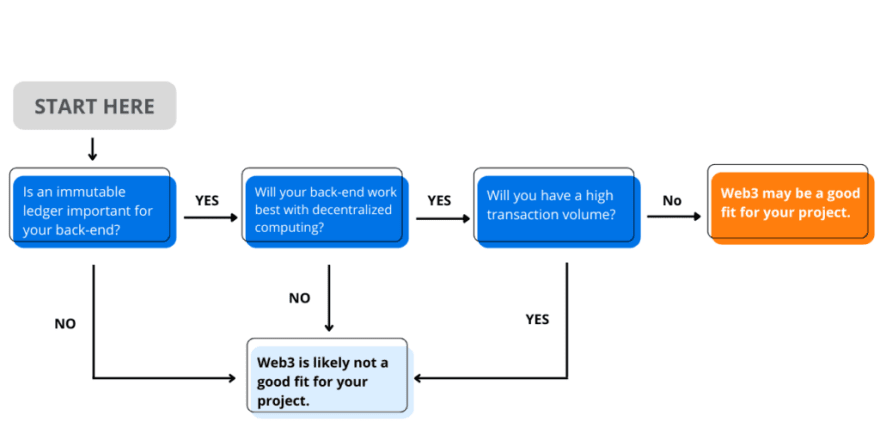Web3 promised to be a revolution that would forever change the way we interact with the web. Its inception caused a sort of gold rush: entrepreneurs founded startups to build the Web3 version of everything out there, investors funded what felt like every Web3 project put in front of them, and developers chased juicy salaries and options packages in the hot new space.
But the romanticism of Web3 has faded, and somewhat dramatically. A weakening economy had VCs pumping the brakes on new technology investments, especially in the volatile Web3 domain. Even large, seemingly “safe” Web3 companies, such as those in the business of crypto wallets and online trading platforms, underwent massive layoffs. Recently, its left many developers, and the broader tech sector, wondering what kinds of products and services actually did fit into the Web3 infrastructure.
1. Is an Immutable Ledger the Best Fit for Your Back-end?
The defining technology of the Web3 platform is the use of a Blockchain, which is a data structure that keeps records of transactions as a ledger. Unlike traditional data storage solutions that allow for CRUD operations (Create, Read, Update, Delete), blockchains are designed to be immutable. You can’t edit or delete information from them, only add new information at the end. This makes it a great fit when traceability is needed, as no one will be able to modify the data in any way.
When considering Web3 for your next project, the very first thing that you should ask yourself is: will my project benefit from having an immutable ledger at the core of its back-end?
If, when you ask yourself this, you determine a traditional CRUD application would work better, building in Web3 will likely not be the best idea.
2. Does Your Back-end Work Best as Decentralized Computing?
The second most important feature of blockchains is their decentralized nature. Decentralized means that control over actions is distributed across many entities, rather than a single centralized entity. The main benefit of decentralization is that more power is given to the participants of a system, rather than in a single large entity.
But there’s another huge benefit, which is that decentralized computing has very high availability. A centralized system has a single point of failure, whereas a decentralized system has many backups for a process.
Although decentralization can be a benefit for availability, it can also have potential impacts on scalability and transaction times.
The question you should ask is: is my project’s need for high availability outweigh the importance of response time to users?
3. Do You Need Scalability or High Transaction Volumes?
One of the biggest challenges for Web3 is the limitations of the network, both in speed and energy consumption.
Blockchain transactions are slow and incredibly resource-intensive by design due to the algorithms that maintain a consistent state throughout the network. A single Bitcoin transaction consumes more energy than 1.5 million VISA transactions.
In some cases, though, Web3 is improving in energy efficiency. Recently, Ethereum completed a merge that reduced its energy consumption by around 99.95%. This improvement is significant in reducing the impact of blockchain applications, providing an overall more environmentally friendly model.
Although energy efficiency has improved in some cases, it is important to note that blockchain is slow. Transactions take 5 seconds to be recorded, and the blockchain has a very tight processing power of 7 to 15 transactions per second. This may sound like quite a bit, but it’s important to put things in perspective: VISA regularly handles 24,000 transactions per second.
When you consider scalability and transaction, you should ask yourself: Do you need the core of your application to be able to handle many users making requests at once? If your answer is yes, Web3 is likely too slow for your use case.
Is Web3 Right for Your Business?
If you would like to learn a bit more about Web3 and how it compares to Web2, I'd suggest checking out this article written by my colleague, Raul: https://www.scalablepath.com/back-end/choosing-web3-for-software-project









Top comments (0)